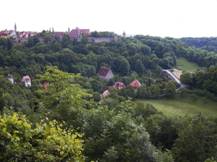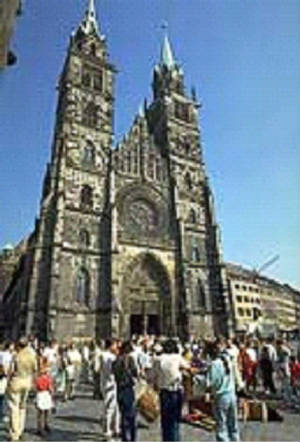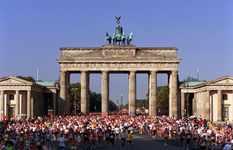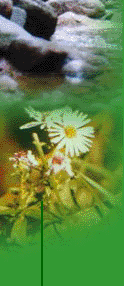|
Everything is
only a foot step away in this city of Love. Rothenberg is wrapped in a stone medieval wall that can’t
keep even the most hopeless of romantics out. Rothenberg over looks the Tauber river. You can look over Rothenberg by climbing
up the Rathouse tower which was built between 1250 and 1400 AD. In 1356 the city was partly destroyed by an earthquake. During
the early part of Rothenberg Konrad reigned king.
A stern look
at the realities of the day can be experienced in the medieval criminal museum where an exclusive display of torture devices
and equipment greet visitors. The Rathouse’s clock that faces the square displays not only the time but, calendar and
date. The closck also feautures a periodical appearance of the legendary former mayor Nusch, who in 1631 drank a 3 liter glass
of beer in one gulp to save the town from peril.
The meat and dance house is another attraction.
It used to be the Rathouse until it burned down in 1240. It was later rebuilt in the 1800’s where the basement was used
as a Metzgeri and the ground level a dance hall. Today it is an art museum.

Nurnberg flourished as a trade route
city during the early part of 1050 under the reign of Henry III—it quickly became the wealth seat of German Imperialism.
In 1356 it was mandated that future kings were to hold their fist parliamentary meeting here. Albrect Drurer was born and
began his art career here. You can visit his home and view some of his works there.
In 1331 the
Hospital of the holy ghost was erected as a welfare institution offering medical care to the poor. Much later, the first train
to make its way through Germany began in Nurnberg and ran through to its
neighboring town Furth in 1835; during the industrial revolution.
The Imperial
castle housed the king and his knights. There were secret passageways beneath the castle which linked parts of the city and
were made for both defense and offence. Not far from the castle is Mauthal. It was initially built as a foods store house
around 1500. It officially became the customs house in 1898 only later in 1929 to be turned into a brewery. Another must see
is the church of St. Lawerence,
built between 1250 and 1477—pictured above.
The Nazi party got its beginnings
here in 1933. During WWII it was one of the most severely bombed cities in Germany--left
over Nazi megalomania like the unfinished congress hall, zepplin field, and parade grounds can still be seen today. Naturally
after the war, the war crimes tribunal was held here.

Potsdam’s
schloss Sanssouci means with out worry. As you can tell by looking into the photo above this palace escapes all of time. It
was built around 1745 from the designs of Fredrik the Great who stocked the palace with Rocco to make it his summer residence.
The gardens around the palace were open to the public and the first of their kind. The Jaged schloss is a must see for outdoor
enthusiasts. Fredrick Wilhelm I was an avid hunter and had it built around 1730 on the edge of the forest.
As the capitol
city of Brandenburg, Potsdam
has its privileges like being a major cultural center. Potsdam is sister cities with Sioux Falls South Dakota and Lucerne
Switzerland; amongst others. You can experience
the diversity by attending one of the many fests celebrated throughout the year. For instance, Babelsberg has an annual weavers
fest where bohemian craftsman and artisans take you back to the middle ages in Weber platz square.
Buildings of
important influence on German history lead the traveler to Ceciliein
Palace. It was here that the political leaders of the US, the UK and the former Soviet Union met
and made decisions concerning the future of Germany
during the Potsdam Conference in the summer of 1945.
Throughout
the centuries the city has attracted a large number of foreigners, such as Huguenots, Dutch, Flemish, Swiss and Russians.
Today you can still see their architectural influences. The Dutch district, known as Hollaendisches Viertel (Dutch Quarter)
is made up of three-story red brick houses that have roof styles typical of the
Dutch.

The
Brandenburg
gate, built in 1791, is the best known land mark of Berlin.
Since 1989, the wall that separated East from West Berlin is gone, travel throughout all of Berlin is possible. Today Berlin remains the capital of
Germany--Formerly the capitol of Prussia
until 1945 and then of Germany between
1871 and 1945. The German parliament, called Bundestag, moved from Bonn to Berlin in 1999.
Another
well known German monument called the Seigessaule (the victory column) lifts an angelic figure emblazen with gold and scepter
69 meters in the air. The Victory Column commemorates three victorious wars of Germany:
1864 against Denmark, 1866 against Austria
and 1871 against France.
What
trip to any German city would be complete without a trip to church? The Kaiser Wilhelm’s Gedachtniskirche (memorial
church) first completed in 1895, received some damage during WWII, but later restored. The concert hall is a definite on the
list of sights as its Grecian columns stretch high above the inhof below in shrine to the epoch of enlightenment under Fredrick
the Great.
And what German experience would be complete without a visit to a princely
estate? The Schloss Charletesberg was occupied by Fredrik I and Fredirk the Great. The house went through many renovations
throughout the ruling families, yet it continues to leave its visitors in awe.
|




